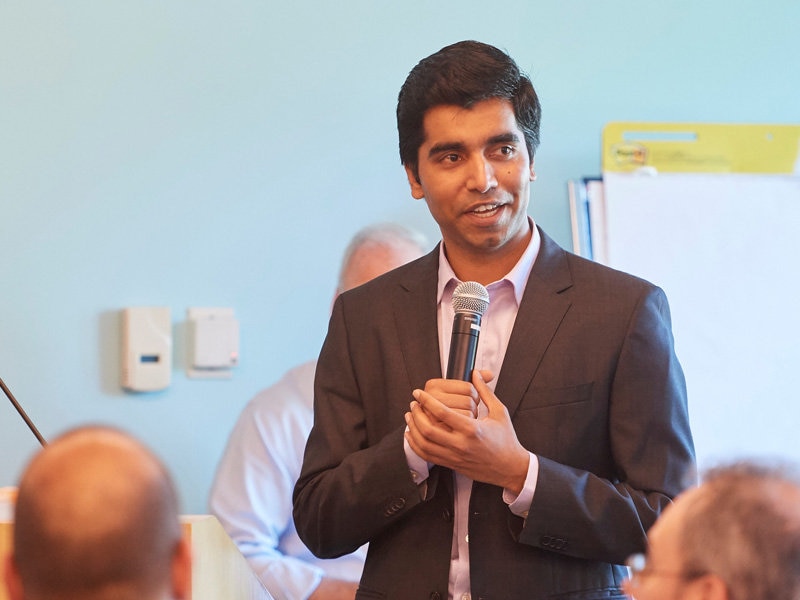"We need to look at every single tool we have"
Publish Date
24 JUL 2020
Overview
Three questions to Ranjeet Patil, Segment Head, Cell and Gene Therapy
Ranjeet, as a global life science supplier, we are helping researchers around the world in finding a response to Covid-19. A major part of this is the race to find a robust medical countermeasure such as vaccine or highly effective treatment. What are we doing to support development and manufacturing in this space?
Currently, we are going many extra miles to accelerate the development cycle. Regarding vaccines, we are supporting more than 50 developers around the world. Our support ranges from providing raw materials and research products to developing manufacturing platforms that enable industrial-scale production. Complexity of the vaccine manufacturing is further amplified by the diversity of modalities. Therefore, there are no standard templates or processes. This makes vaccines production extremely challenging.
Monoclonal antibodies (mAbs) are being explored as a rapid yet very precise therapeutic for Covid-19 patients. Over the years, we have worked closely with industry leaders in mAb space to establish their mAb manufacturing templates which are commonly used in cancer treatment production. Thanks to decades of experience in bioprocess optimization and innovation, we are an industry leader in mAb manufacturing technologies. However, the mAb volumes that these manufacturers are trying to produce within few months are unprecedented. We are closely collaborating with vaccine and mAb developers across all levels of organization to ensure we can keep up with their pace.
Can you name specific vaccine projects in the context of Covid-19?
Yes, sure. One example is our collaboration with the Jenner Institute of Oxford University. We have been working with this team since last few years towards development of a flexible vaccine manufacturing platform that is based on their novel adenovirus vector platform. The original goal of the collaboration was development of this platform for a rabies vaccine candidate using adenovirus vector. Through our partnership, we developed an efficient single-use process that can be quickly scaled up and deployed globally. In response to Covid-19 pandemic, Jenner Institute leaned on this platform to rapidly scale and transfer their process to partners across the world.
Another partner we are working with is Baylor College of Medicine in Houston, Texas. We have already been collaborating with Baylor on a schistosomiasis vaccine for some years. Now we are using the learnings from this project to optimize the production processes in order to advance Baylor’s two Covid-19 vaccine candidates, including the CoV RBD219-N1 vaccine candidate, which is expected to enter clinical trials later this year. This vaccine candidate was initially developed to target SARS. In parallel, we will support development of a manufacturing platform for a second Covid-19 vaccine candidate which could help shorten the time for this vaccine candidate to enter into Phase 1 clinical trials. Baylor’s vaccine projects target low-income countries, they must therefore be cheap to produce. Overall, our goal is to help Baylor to establish robust and scalable processes that enable industrial production.
As you mentioned, there are different vaccine and therapeutic modalities currently in development, including some truly novel approaches that have never been tested at this scale. Which of these technologies do you consider the most promising?
Well, first of all, we must mind that we are facing a new virus. We are learning a lot about it every day. Currently, researchers and the industry are throwing the entire scientific arsenal at it. In the context of this unprecedented challenge for public health, such diversification of risk is truly needed. We need to look at every single tool we have.
Specifically for vaccines, we need vaccines that are safe, effective and accessible globally. The data we have so far indicates that many vaccines in development are generally safe. The vast majority of projects across all modalities have also shown some decent immune response. However, we don’t have data yet that shows which vaccine candidates actually protect against infection or reduce the severity of the disease in humans. Then, we have to ensure massive-scale production. To fight this pandemic, we will need to produce an unprecedented amount of vaccine in a very short period of time. That means, we need more than one vaccine to serve the global demand. Our job is to focus on science and support all development programs to the best of our ability. That’s what we’re currently doing, day and night.

